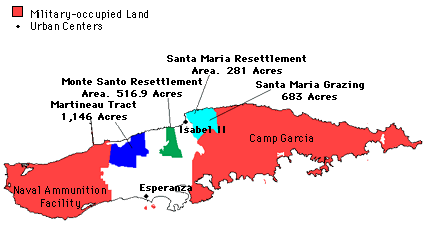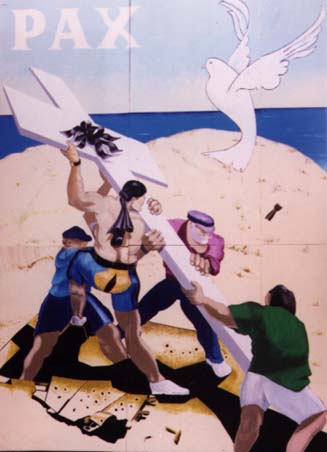
An Introduction to Vieques

An Introduction to Vieques
Originally named Bieque by the pre-columbines Indians,
the island of Vieques is located in the Caribbean to the East of the big
island of Puerto Rico. It has a population of 9,400. |
Since 1938, the US Navy has been acquiring land in Vieques by expropriation. The Navy controls 26,000 of the Island's 33,000 acres. Located at the eastern and western sections of the island, the US Navy uses 75% percent of the Island's soil for war maneuvers, and bomb storage. |

In April 19, 1999 two F-18 airplanes threw two bombs, 500 pounds each, outside their target area and killed David Sanes, a Vieques civilian, and injured other four, including one soldier. This event has once more rendered evident the danger that the presence of the US navy represents for the people of Vieques. Once more, the people from Vieques, from Puerto Rico in general, and all concerned citizens of the globe demand the immediate halt to any war practices and the eventual demilitarization of all the territory of Vieques. After the killing of Sanes, the opposition to the US Navy has reached a consensus, something very rarely in Puerto Rico social and political arena. All political parties and the government, as well as religious groups, had called for a halt on the military practices in Vieques' soil, over Viequenses' heads.

There is more, and these are but samplings of the richness of Daniel's Website. I wanted to give you a taste, and I urge you to explore it thoroughly.
